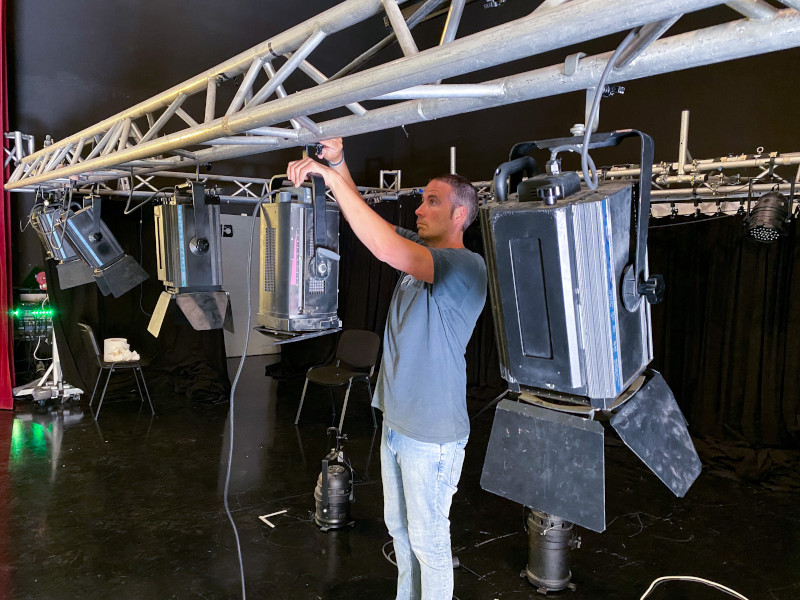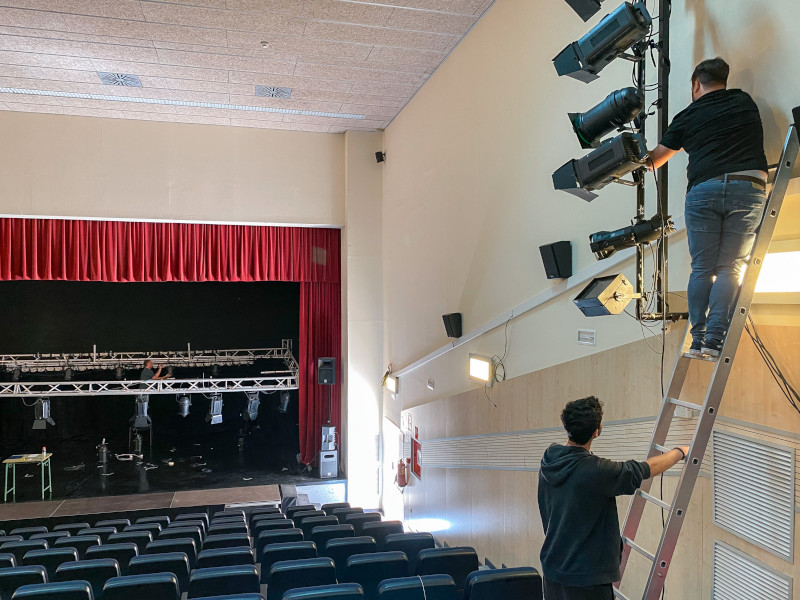Secure your auditorium’s stage rigging

The auditorium of any school is full of potential risks. Most of those risks are obvious, such as problems with lights, housekeeping and prop storage. But two particular issues are often overlooked and can be devastating if they lead to injury or property damage: stage rigging and curtains.
Stage rigging
Stage rigging, also called counterweight rigging, describes the mechanisms used to lower and raise the pipes over the stage. These pipes (battens) carry stage lights, curtains, acoustical shells and sometimes scenery.
You may have seen a movie or TV show in which someone backstage at a performance removes one of the counterweights so that a piece of heavy equipment drops onstage. The best way to avoid such an incident is to perform annual theater rigging inspections. The ongoing frequency of future inspections should be determined, based on the age of the rigging and use, by the inspector in accordance with the American National Standards Institute.
After the inspection, the agency should give your school a written post-inspection report so you can start immediately on any modifications or corrections. You should take care of the most hazardous conditions first.
Once you have completed the corrections, the agency should give you a certificate, which you should post in the stage area to assure students and staff members that you are compliant. The inspector can also work with you to develop a preventive maintenance schedule.
Curtains
While auditorium curtains may start their life as flame-retardant, wear and tear over the years can significantly lower their ability to repel fire. To reduce the risk of fire, you should:
- Inspect the curtains every year for damage, dust accumulations and other nearby hazards or ignition sources. Dust is combustible, which means the heat of auditorium lights combined with damaged curtains could lead to a major fire.
- Maintain your curtains’ flame resistance by checking their manufacturer tags. The tags will tell you what flame-resistant rating is provided for each curtain, and how long this rating is effective. Although all curtains should be inspected annually regardless of rating, most chemical treatments may only be effective for one to five years. During this time frame, a qualified vendor should be contacted to perform an inspection. When the inspection is complete, the vendor may recommend that you replace the curtains.
- Consider installing fire safety curtains, which release from the ceiling to provide a barrier between the stage and auditorium seating, allowing individuals more time to evacuate in the event of a fire.
For more theater safety tips, visit our Risk Control resources page.




